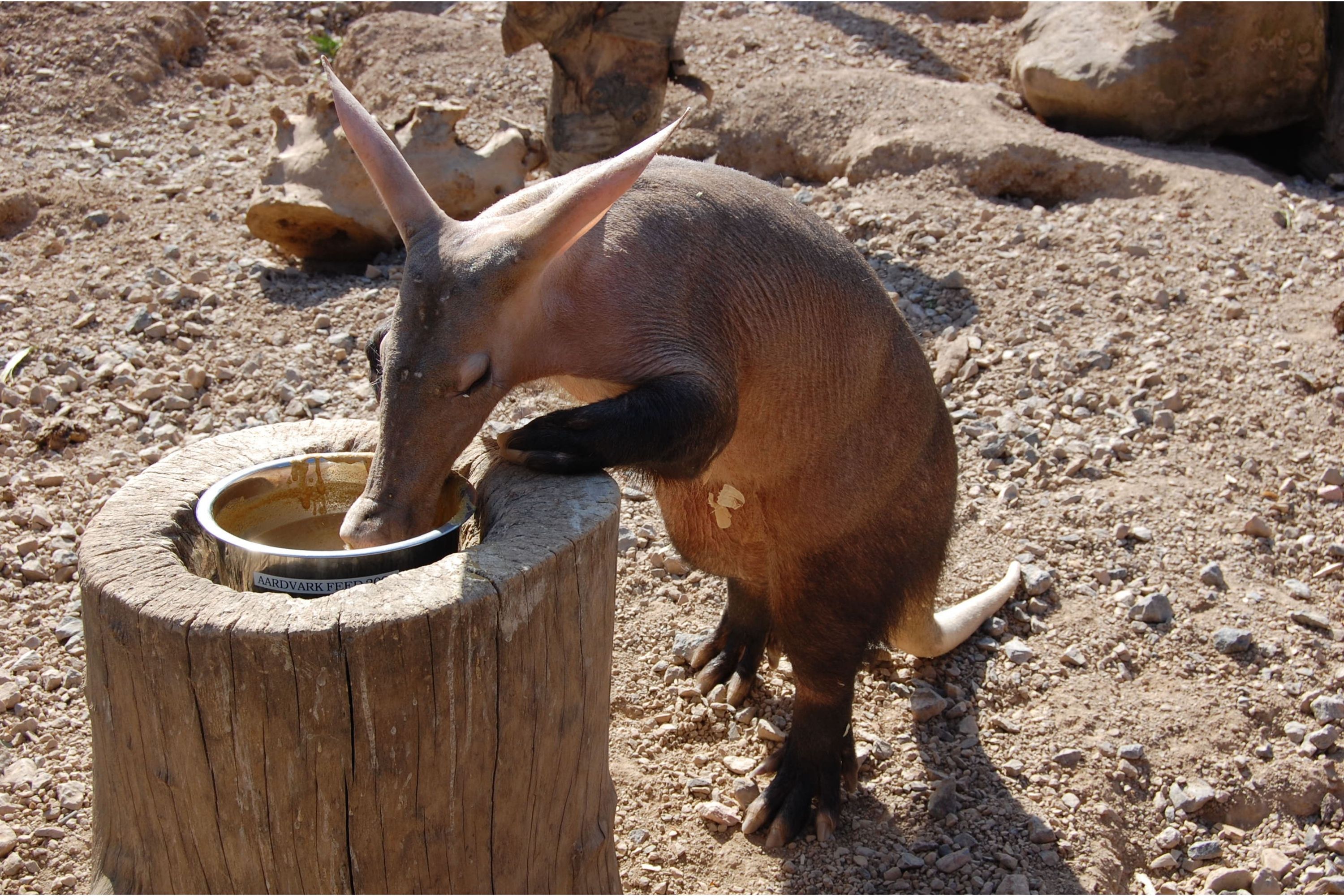Aardvark
(Orycteropus afer)

Description
The aardvark (/ˈɑːrdvɑːrk/ ARD-vark; Orycteropus afer) is a medium-sized, burrowing, nocturnal mammal native to Africa.It is the only living species of the order Tubulidentata,although other prehistoric species and genera of Tubulidentata are known. Unlike most other insectivores, it has a long pig-like snout, which is used to sniff out food. It roams over most of the southern two-thirds of the African continent, avoiding areas that are mainly rocky. A nocturnal feeder, it subsists on ants and termites, which it will dig out of their hills using its sharp claws and powerful legs. It also digs to create burrows in which to live and rear its young. The aardvark is vaguely pig-like in appearance. Its body is stout with a prominently arched back and is sparsely covered with coarse hairs. The limbs are of moderate length, with the rear legs being longer than the forelegs.The front feet have lost the pollex (or 'thumb'), resulting in four toes, while the rear feet have all five toes. Each toe bears a large, robust nail which is somewhat flattened and shovel-like, and appears to be intermediate between a claw and a hoof. Whereas the aardvark is considered digitigrade, it appears at times to be plantigrade. This confusion happens because when it squats it stands on its soles. A contributing characteristic to the burrow digging capabilities of aardvarks is an endosteal tissue called compacted coarse cancellous bone (CCCB). The stress and strain resistance provided by CCCB allows aardvarks to create their burrows, ultimately leading to a favorable environment for plants and a variety of animals. It is the largest member of the proposed clade Afroinsectiphilia. The aardvark is pale yellowish-gray in color and often stained reddish-brown by soil. The aardvark's coat is thin, and the animal's primary protection is its tough skin. Its hair is short on its head and tail; however its legs tend to have longer hair. The hair on the majority of its body is grouped in clusters of 3-4 hairs.The hair surrounding its nostrils is dense to help filter particulate matter out as it digs. Its tail is very thick at the base and gradually tapers.
Taxonomic tree:







